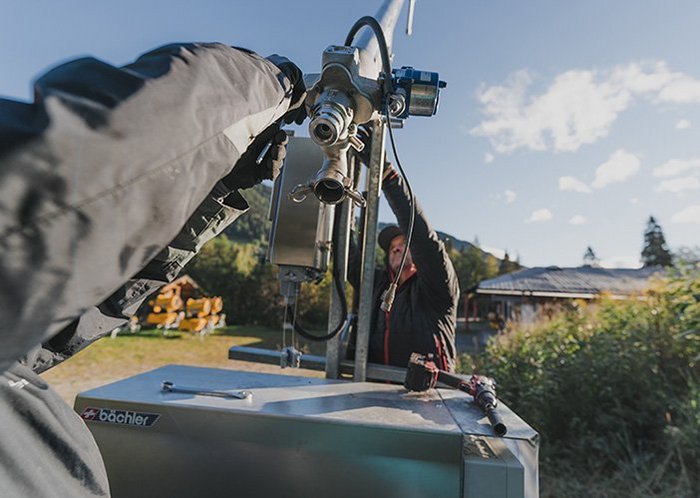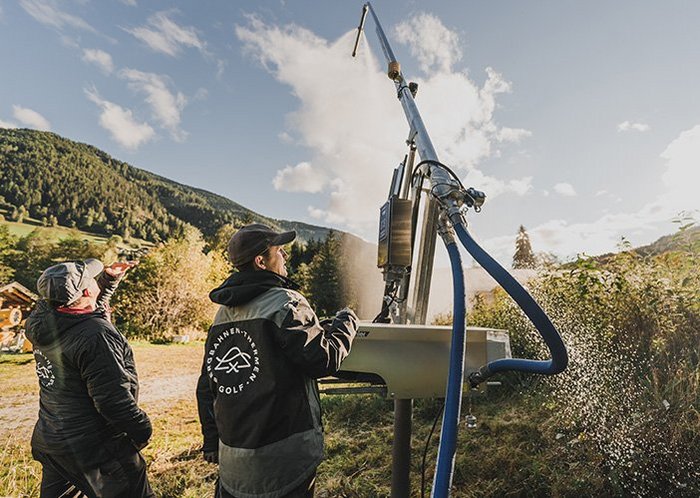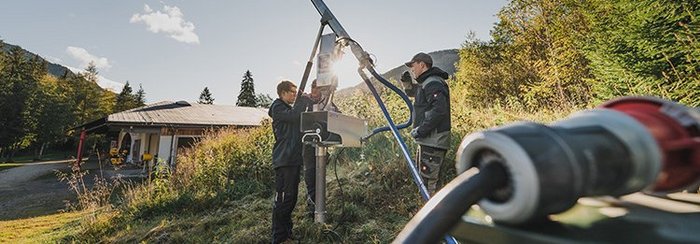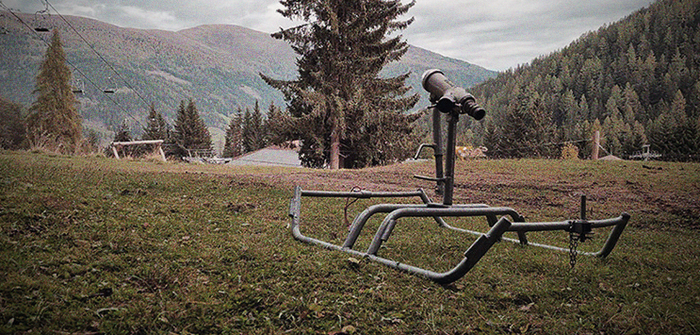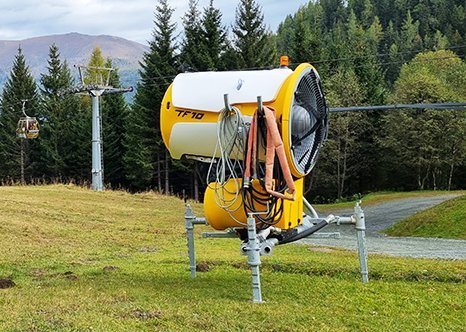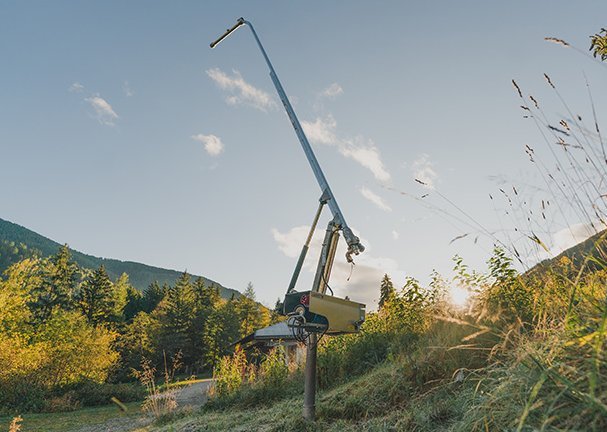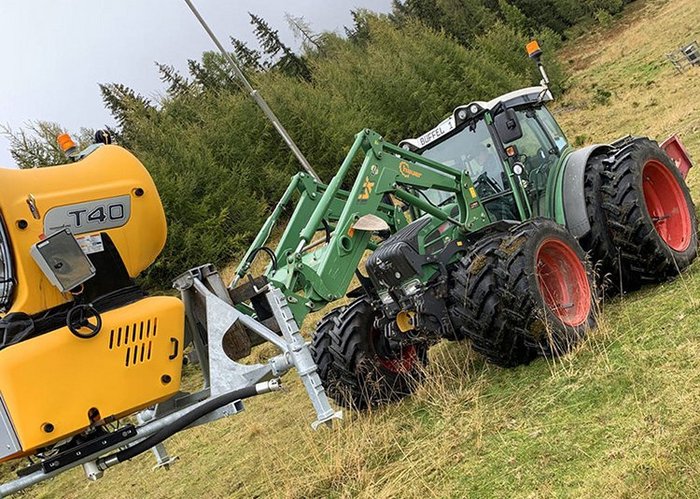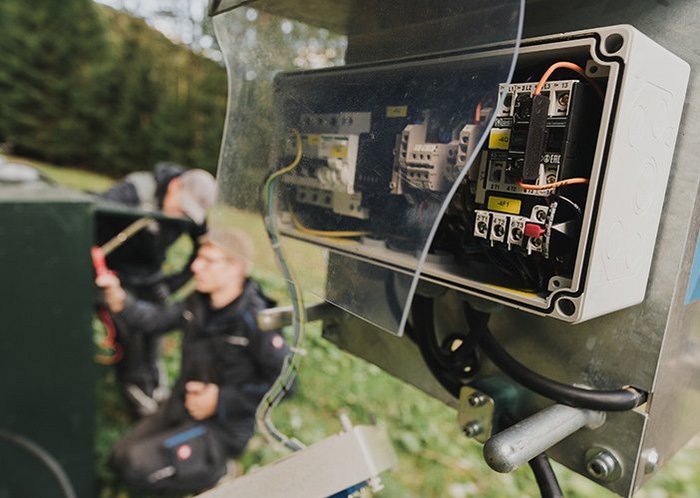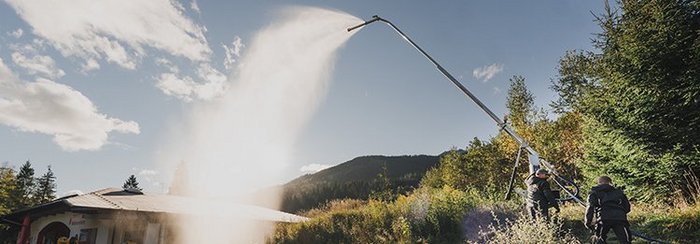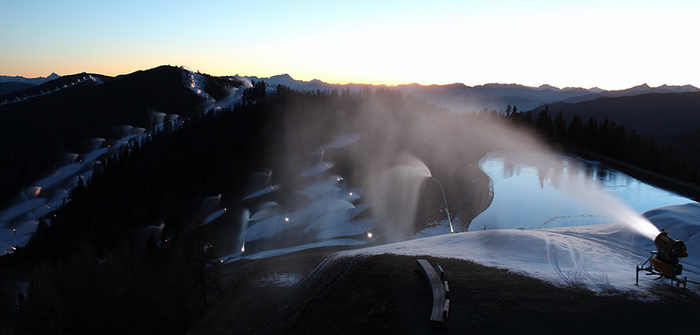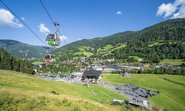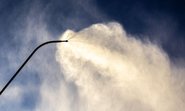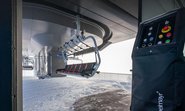Winter is just around the corner and there are only a few weeks left before you can make your first tracks in the ski area Bad Kleinkirchheim. Our team is already working in full speed, so that we can continue to offer you a great skiing experience on perfectly groomed slopes. Let’s have a look behind the scenes, on how we give Mother Hulda a hand using latest technology. Ready, set go for snow – our snowmakers are ready!
How much snow do we get?
The amount of snow fall varies from winter to winter. Many ski areas are confronted with constantly changing conditions and have to overcome this challenge accordingly. However, winter sports are an important economic driver for many regions. Especially at the beginning and towards the end of the season, the natural snowfall is often not enough to maintain a continuous snow cover on the slopes. In order to being able to ensure the skiability, quality and safety of the slopes even at low altitudes, ski areas are therefore increasingly relying on technical snowmaking.
But what is technical snowmaking?
Although colloquially referred to as 'artificial snow', there is nothing artificial about technically produced snow. Just like natural snow, it consists of water and air. It is produced in a so-called 'snow gun' – a low-pressure fan gun, to use the correct mountain railway jargon – or in a snow lance. In a snow lance, for example, the snowmaking process works as follows: water is atomised into the finest droplets and emerges from a nozzle. Compressed air is blown into this. The air then expands, ice nuclei form and the water crystallises. On their way to the ground, these freeze, mimicking natural snowfall.
Snowmakers were invented rather accidentally in the 1940s as part of Canadian aircraft research. At very low temperatures, a research team sprayed water into a wind tunnel. The result: snow. In terms of its density and the size of the ice crystals, however, this technically-produced snow differs significantly from natural snow. It is also significantly more heat-resistant, which is a great advantage, especially for snowmaking on downhill valley runs.
Good to know: Real ‘artificial snow’ is made of plastic or styrofoam and has no place in nature. You might see it being used for winter scenes in the theatre.
The technical helpers of the Bad Kleinkirchheimer Bergbahnen.
The first selective snowmaking took place in 1978/79 and with a mobile propeller machine made by Linde. In 1982/83, one of the first hybrid snowmaking systems - a mixture of compressed air and propeller snow guns - was built and put into operation in the Bad Kleinkirchheim ski area. One of these compressed air snow guns is still known today as the "Arlberg Jet".
And today?
In the ski area Bad Kleinkirchheim, 50 low-pressure fan guns (TechnoAlpin, Demaclenko and Sufag) and 750 snow lances (Gemini and Demaclenko) are nowadays helping to create and sustain a continuous snow base on the slopes. However, surface-covering snowmaking in Carinthia's ski areas is only permitted by law until 31st January of the current season. After that, only selective snowmaking measures are possible.
How do the snowmakers get to the mountain?
During the summer inspection, the snowmakers are subjected to a rigorous check. Afterwards, from August to October, our team places the machines in the ski area. Which machine they set up when and where is specified in detail. This means, that they start at the top and work their way towards the valley. Since grazing cattle are moved from higher altitudes earlier in the season, those pastures can be set up first. Additionally, it is not that uncommon to have a first snowfall at 2,000 metres in September. And as you can imagine, this would make setting up the snow guns much more difficult. Once in place, the final endurance inspection takes place. In addition to checking the correct inflow of water and air, the actual production of snow is checked.
Should I stay or should I go…?
The snowmakers are not always dismantled at the end of the winter season. If installing and then dismantling them causes more strain on the immediate environment, they are left in place over the summer. This is the case along the Franz Klammer World Cup slope. Constant moving and configuration of the snow lances placed there would have a massive impact on the soil and vegetation in that area – not to mention the financial and personnel costs. Our team, however, always dismantles the snow machines over the summer months in those areas used agriculturally.
By the way: Depending on the frequency of use, the intended use and the state of the art, snow lances often have a life cycle of up to 40 years. When purchasing a new one, we can always exchange older models with the manufacturer instead of disposing of them.
Where are snow lances used, and where do we go with fan guns?
Snow lances can basically be used in all locations. But since they are 10 metres high they are very susceptible to wind. In the ski area Bad Kleinkirchheim, they are therefore mainly used on wide slopes, so that the technical snow still has a chance to land on the slopes when there is a little wind. Fan guns, on the other hand, have a very good snowmaking capacity of up to 100 m³ of snow per hour. However, this capacity does also come with significant energy consumption. That is why we mainly use them to make snow on large areas and at specific danger spots, such as steep drops or slopes. As is so often the case - when it comes to snowmaking: it's all in the mix.
Saving energy the right way!
Did you know that the technical snowmaking systems in all ski areas are responsible for an annual consumption of 205 GWh? This equates to roughly 0.33% of Austria’s total consumption. However, around 90% of this now comes from renewable energy sources such as water, solar, wind power and biomass.
In order to save energy even during snow production, we rely on many digital tools. Using digital snow depth measurement, our employees can, for example, read exactly how much snow is needed at which point and adjust the snowmakers accordingly. It goes without saying that we only make snow when the temperatures and climatic conditions are suitable. This already results in a savings potential of approx. 10% of our energy requirements. And the manufacturers of the snow machines have also invested a lot of time in further developing the energy efficiency of their devices. Over the years, they were able to save 80-90% of the energy with the snow lances. In the case of fan guns, it's now already at 40%.
As you can see, energy management is an essential core topic of our company. Various technical options help us save energy sensibly. We also continuously invest in further training opportunities to make our employees and colleagues aware of the topic. After all, we want to continue to work efficiently and with foresight in this area as well.
That is quite a lot of technology that we use to help Mother Hulda, don't you agree? You can find out more about how snow guns work in our blog post Water, low temperatures, air.

